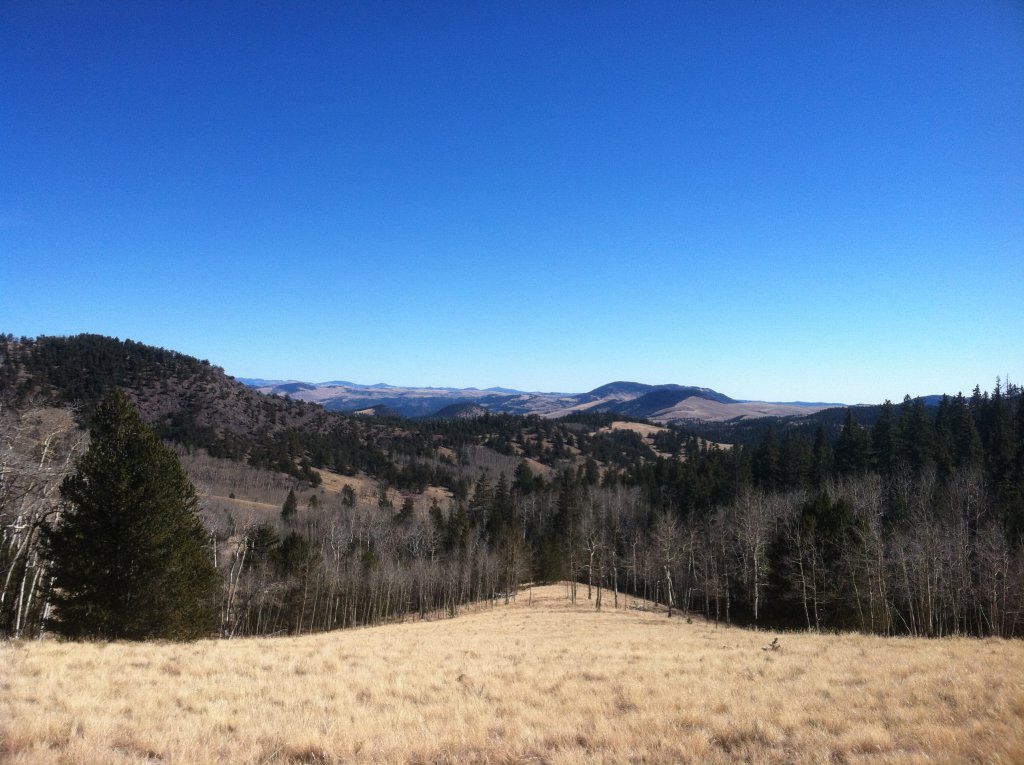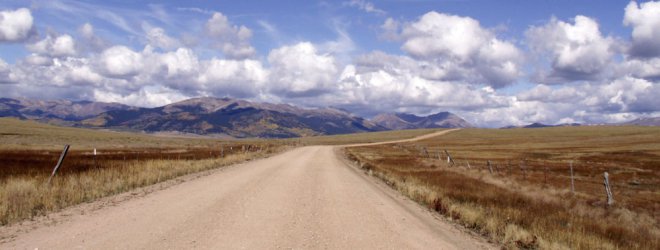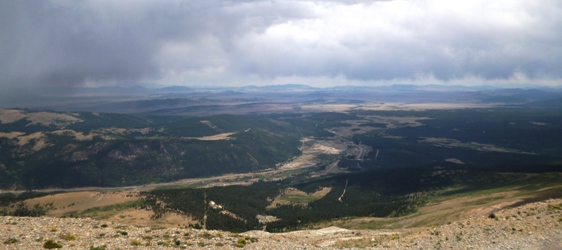
The South Park National Heritage Area welcomes all visitors to experience the unparalleled beauty of its scenic landscapes, rich heritage, and abundance of recreational opportunities. Whether you are stopping to visit one of our heritage sites or you are planning to stay a while and explore the rugged wilderness, South Park has something to offer everyone. However, South Park differs greatly from the urban areas of its Front Range neighbors and a little preparation is needed to safely enjoy its unique qualities. We have compiled some brief but helpful guides to help you prepare for your trip to South Park:
- Climate and Weather – Learn about South Park’s varied climate
- Road Conditions – Check South Park’s road conditons
- Altitude Health Factors – Understand the effects of South Park’s high altitude
Climate and Weather

South Park’s climate varies widely across more than 1,700 square miles of alpine valleys and mountain peaks. The weather can be delightful, with summer days in the 70s and cool, crisp nights. At other times, temperatures can fall well below zero with high winds that foster sudden white-outs. The key to enjoying all the seasons in South Park is to be prepared. Whether summer or winter, protect yourself from too much sun. At our high elevations and clear skies, the sun’s rays are more direct. With over 300 sunny days a year in South Park, wear sunscreen, a hat, and sunglasses for best protection.
The low humidity makes both high and low temperatures more comfortable, especially in the sun. But, since temperatures can fluctuate widely during the course of a day, dress in layers of clothing to stay comfortable at any time. In the summer, afternoon thunderstorms are common, so keep waterproof clothing handy. Snow is possible in every month of the year and generally, the thermometer drops about four degrees for every 1,000 feet above sea level, so if you travel to some of our highest peaks, be prepared to don extra clothing.
If you plan on traveling in the backcountry of South Park during the winter, please visit the Colorado Avalanche Information Center for information on staying safe.
Road Conditions

The roads in South Park are managed by several different entities and all receive different levels of maintenance. Our major highways are paved but most county and town roads remain unpaved. There is a vast network of unpaved roads within the Pike National Forest that are generally best suited for 4WD, high clearance vehicles. Major highways, town roads, and most county roads are plowed regularly in the winter but Forest Service roads are not. The key to navigating South Park by car is to plan ahead and use a trustworthy map, such as the U.S. Forest Service’s Motor Vehicle Use maps. https://www.fs.usda.gov/detail/psicc/maps-pubs/?cid=stelprdb5177824
Information on road conditions can be obtained by contacting the road manager:
Road Type Manager Information
Major Highway Colorado Department of Transportation COTrip.org
County Road Park County Public Works Call 719-836-2282
Forest Service Road South Park Ranger District Call 719-836-2031
Altitude Health Factors

Park County has an average elevation of 9,000 feet above sea level, with Alma as the highest incorporated town in North America at 10,578 feet. Twenty five mountains rise to over 13,000 feet above sea level with four topping the 14,000-foot mark. Visitors should think and plan carefully when coming to these elevations. Medications, some foods, and especially alcohol may affect you differently than they do at lower altitudes.
Breathing Factors
Breathing can be more difficult at higher elevations. It is recommended that pilots flying at over 10,000 feet above sea level use oxygen. So, when you find yourself getting a headache while in South Park, realize that the amount of oxygen you’re able to draw into your lungs with each breath is about 26% of what you get at sea level. Taking frequent breaks, drinking lots of water, and stopping or sitting down periodically during walks or exercise often helps people adjust more quickly to the elevation.
Early symptoms of oxygen stress are headaches, crankiness, upset stomach, and difficulty sleeping. Anyone can be affected by altitude sickness – fitness and age are seldom a dominant factor. If the symptoms increase or breathing becomes very labored, call 911 or go to a lower elevation to replenish your oxygen intake.
